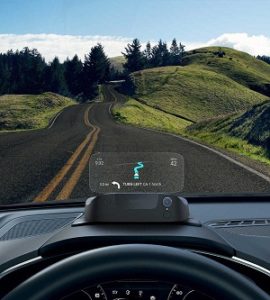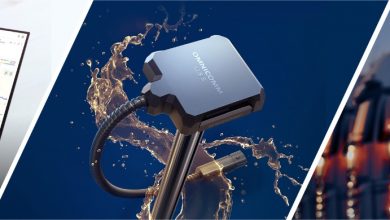Telematics is only the first step
The dot on the screen that shows where a vehicle is, and the alarm in the cab that warns a driver to slow down,is not fleet management. Intelligence that enables real-time business decision-making is.
Legislation in India makes it compulsory for public transport vehicles to have vehicle telematics devices installed. Once the law comes into full effect, millions (if not billions) of data packets will be collected from vehicles every day. But to what end? Collecting data is only the beginning. If it is not analysed and used, there is no point in collecting it.

More than dots on maps
Increasingly, vehicles are fitted with telematics devices during the manufacturing process, enabling vehicle manufacturers to collect data on the performance of their products. They use this information to design better vehicles.
But there is another side to the telematics coin: fleet management. In the case of India’s legislation, it is in the public interest to run busses and taxis as effectively and efficiently as possible. Similarly, private fleet managers have much to gain from data that gives them visibility on all aspects of their businesses at all times.
“This is where telematics can and should come into its own,” says Shaun Brashaw, Executive: Technology of Altech Netstar in South Africa. Founded as a vehicle tracking and stolen vehicle recovery company in 1994, Altech Netstar has evolved into a high end fleet systems developer.
Fleet management is about an entire ecosystem that is networked through the internet of things (IoT) and pulled together through big data analytics,” says Shaun. “Enormous benefits can be derived from drawing in data from different sources – not only vehicles – to provide a single view of the business through a user-friendly online portal. For us the purpose of telematics is fleet management in the most comprehensive sense of the word, namely a second-by-second view of the business that gives executives the context they need to make businesses decisionsin real time.”
The ecosystem Brashaw refers to includes regulatory requirements and legislation, safety and compliance (eg, axel mass, up-to-date licences), fuel management, risk management, health and safety matters, scheduling and dispatch, and gate management.
Currently, fleet telematics concentrates largely on driver behaviour. Tracking devices locate vehicles on an electronic map, while monitoring driving actions such as speed control, braking and acceleration.

However, this information exists in isolation, as do the other ecosystem elements. The company’s fuel account, for instance, is managed through a fleet card system that resides in the Finance Department, while issues such as rewards and recognition, career planning and disciplinary action are the domain of Human Resources. Depot managers often work in silos, failing to coordinate vehicle utilisation and route optimisation. And nobody comes even close to an immediate understanding of the total cost of ownership of each individual vehicle and the fleet as a whole.
Fleet management entails far more than the harvesting of information from a truck and its driver; it has to be a holistic process. “We see fleet management as the ability to manage all your transport risks and opportunities from one portal,” says Brashaw. “IoT broadens our horizons like never before. In addition to vehicle utilisation, driver behaviour, fuel and salary bills, and the legislative boundaries within which operators have to function, we can now develop unique solutions for each of the verticals served by the transport sector by monitoring and reporting on the quality of goods in a shipment.”
Over and above general quality parameters, such as whether or not a load had been dropped or was tampered with, pharmaceutical distribution, for instance, requires careful temperature control, which can be monitored by inserting wireless temperature probes in the load. Electronics, on the other hand, are sensitive to vibrations, while coal deliveries are particularly susceptible to shrinkage.
“Fleet managers are increasingly demanding industry-specific, custom-made solutions,” says Brashaw. “It is an exciting challenge for all of us in the telematics industry.”
Delivery through collaboration
Delivering on these customer expectations is best done collaboratively through the leveraging the power of IoT. Thanks to the Fourth Revolution, which is putting technology in people’s hands in useful and accessible ways, fleet managers are increasingly tech savvy. “We don’t have to sell the advantages of technology because people are already used to not waiting until next week to receive today’s data,” says Brashaw. “Our task is to pull the available technologies together and collate the data they generate into a single, seamless view that is easy to understand and that customers can manipulate according to their needs and preferences.”
In meeting this challenge, industry players have to stop behaving as telematics providers and become fleet system providers.
“Our job is to write the specification that will deliver the fleet manager’s ecosystem to his or her fingertips,” says Brashaw. Armed with that understanding, the fleet system provider incorporates other service providers into its network and links all their systems into a delivery portal. This entailscollaboration with non-traditional partners, such as banks, and exploiting the cloud as delivery platform.
Delivery via the cloud has become a given, largely because of the flexibility it offers. Fleet system providers can effortlessly scale their services to accommodate the usage peaks and valleys that characterise telematics loads and, importantly, bill accordingly. Pay-per-use is a feature no industry player can afford to be without.
Another cloud advantage is that providers can duplicate their infrastructure globally. As a result, customers can connect from anywhere on any device, making it possible for a company like Altech Netstar to operate in markets as diverse and geographically dispersed as South Africa, Australia and India.
The future of fleets
Transporters know they have to digitise their businesses to remain relevant. They have already evolved from 2PL transporters to 3PL logistics providers, and are dipping their toes into 4PL and even 5PL waters. An Uber-type model for loads will become a reality as soon as the regulatory issues around risk management have been resolved.
Sadly, in most instances, fleet management companies remain stuck in the past. They keep on developing solutions with traditional transporters in mind. At most, an element of logistics is thrown in in the form of route optimisation.
“We are yet to build a 4PL solution in fleet management terms,” says Brashaw. “The time has come to integrate data from different sources into real-time views of the logistics business as a whole. For example, business owners want to know how each depot is performing against its KPIs today. This should include revenue generated and total costs, from salaries, overtime and sick leave, to vehicle repairs and maintenance. The more traditional services, such as route optimisation, vehicle tracking and sign-on-glass PODs, become the givens, not the selling points.”
In this scenario, maintenance becomes predictive because it is based on each vehicle’s actual performance and needs, not on the manufacturer’s standard. Pressure points and bottlenecks in an operation become evident; an inefficiency in the wash bay, for instance, stops costing the business money in the form of late delivery penalties.
A different approach to insurance becomes possible: instead of a flat monthly premium, pay-per-trip is an option. An executive can see immediately how his or her business tracks against global best practices. He or she can drill down in the data to identify opportunities for improvement because the data can be exported, manipulated and compiled into customised dashboard.
“None of this is actually futuristic,” says Brashaw. “We have the technology to drive such business models. The telematics is a given, and has been for the last 15 years. The question we have to answer for our customers is how the technology enables fleet management. The future is about the value we add and the problems we solve.”

